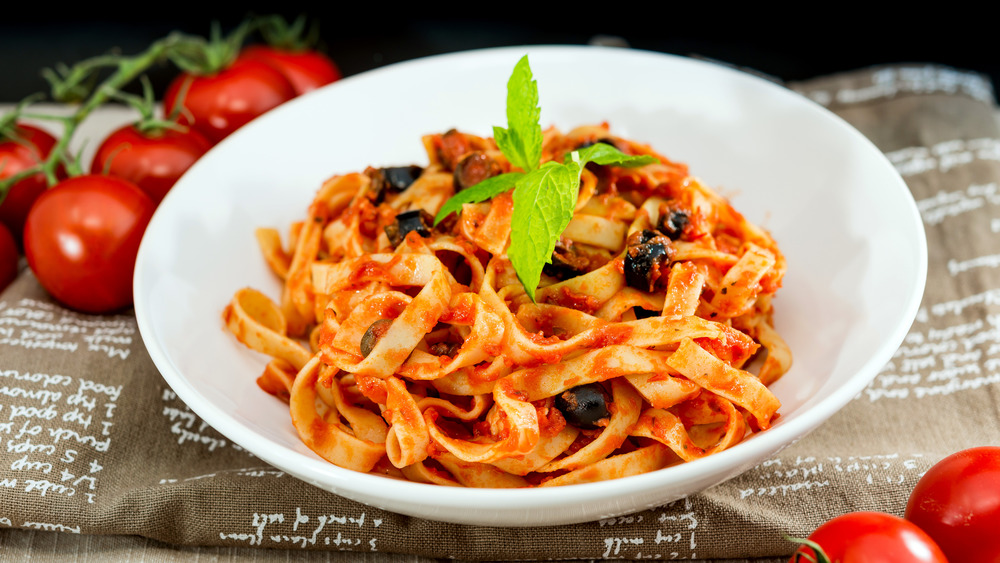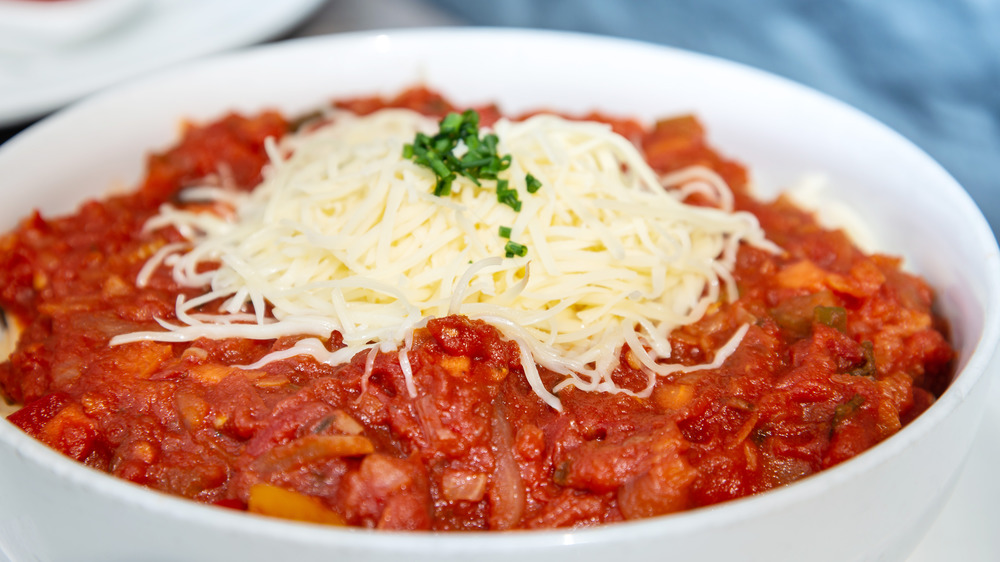Here's The Difference Between Marinara Sauce And Bolognese Sauce
It's a well-known fact that Italians don't mess around when it comes to their pasta sauce — ahem — their gravy. But if you've ever combed the internet for an authentic lasagna recipe, then chances are you've come across way more styles of red sauce than you've ever realized existed. Today, we'll tackle two of the most common choices: marinara and bolognese.
The differences between the two are subtle since they're both tomato-based, but once you take a good look at the ingredient list of each, the distinction is clear. To start, let's look at the basis of the word "sauce" versus "gravy" — an age-old debate among Italians. According to North Carolina-based restaurant Georgina's Pizzeria, the two terms can actually co-exist in the dictionary of Italian cuisine; "Sauce" refers to a thinner, liquid topping, whereas "gravy" is reserved for chunkier, starchy options. While that may still be up for debate until the end of time, for the purpose of this article, we're going to classify marinara as a sauce, and bolognese as a gravy.
Marinara is typically a meatless sauce
Marinara sauce is the more common of the two, likely because of its simple ingredient list. Ina Garten's classic recipe is easy and flavorful, calling for olive oil, onion, garlic, salt, pepper, parsley, crushed tomatoes, and a nice red wine. Notably absent from that list, and most other marinara sauces you might bookmark on the internet, is meat.
While meat marinara can pop up on menus, it's typically a lighter fare with small amounts of ground meat (via Chowhound). In most cases, an authentic marinara ditches the meat in favor of bringing out the acidity of the tomatoes in a thinner sauce, the site explains.
Marinara is also a great option if you're looking for a fuss-free, quick addition to your pasta. Unlike bolognese, it can be low-maintenance. It's one sauce you can even toss the ingredients in a crockpot to set and forget. If you want to cook something on the stove while you wait for your spaghetti to become perfectly al dente, then you'll want to opt for something like Garten's recipe above as it only takes a half an hour!
Bolognese is a loaded, slow-cooked gravy
Italians' love for a tasty meat sauce dates all the way back to 1891, when it was first featured in a cookbook by Pellegrino Artusi alongside a pasta dish (via Grapes & Grains).
RecipeTips states that bolognese sauce, which originated from Bologna, Italy, is the ultimate meat sauce, filled with complex flavors derived from the addition of different proteins. The site also explains that most bolognese sauces have at least two types of meat. And unlike the occasional marinara-with-ground-beef combination, bolognese sauces are made with larger cuts of a variety of meats, such as veal, pork, or chicken.
Most notably, though, is how long bolognese takes to cook. If you're looking for something simple, then trust us: You'll want to skip the bolognese tonight. A chef told Chowhound that when it comes to making a true bolognese, you should expect to be stove-side for at least four hours.
Another main difference between the two, Chowhound explains, is that bolognese should be hearty and heavy enough to be a standalone entree. Some chefs even use cream and bacon to really beef up the sauce. Of course, you can (and should) add some pasta — then you're in for a real authentic Italian meal.


